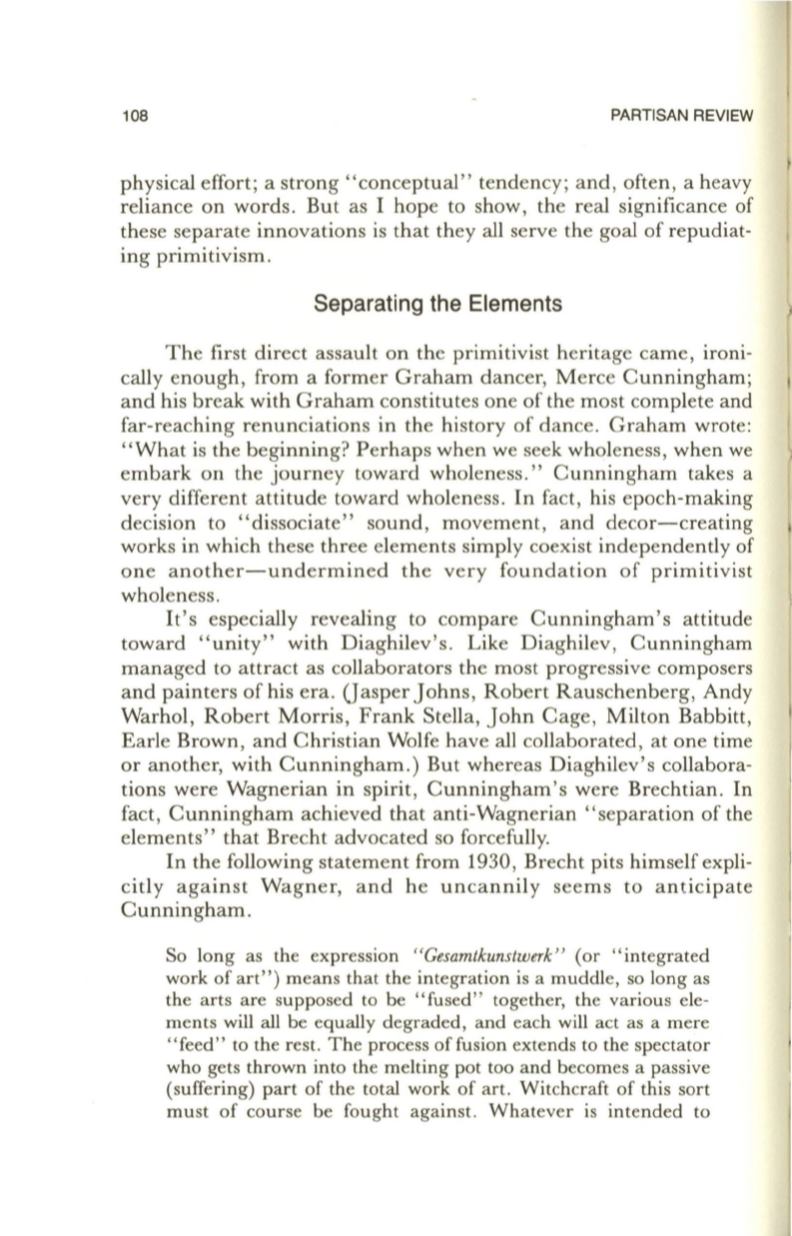
108
PARTISAN REVIEW
physical effort; a strong "conceptual" tendency ; and, often, a heavy
reliance on words . But as I hope to show, the real significance of
these separate innovations is that they all serve the goal of repudiat–
ing primitivism.
Separating the Elements
The first direct assault on the primitivist heritage came, ironi–
cally enough, from a former Graham dancer, Merce Cunningham;
and his break with Graham constitutes one of the most complete and
far-reaching renunciations in the history of dance . Graham wrote:
"What is the beginning? Perhaps when we seek wholeness, when we
embark on the journey toward wholeness." Cunningham takes a
very different attitude toward wholeness. In fact , his epoch-making
decision to "dissociate" sound, movement, and decor-creating
works in which these three elements simply coexist independently of
one another-undermined the very foundation of primitivist
wholeness.
It's especially revealing to compare Cunningham's attitude
toward "unity" with Diaghilev's . Like Diaghilev, Cunningham
managed to attract as collaborators the most progressive composers
and painters of his era.
a
asper Johns, Robert Rauschenberg, Andy
Warhol, Robert Morris, Frank Stella, John Cage, Milton Babbitt,
Earle Brown, and Christian Wolfe have all collaborated, at one time
or another, with Cunningham.) But whereas Diaghilev's collabora–
tions were Wagnerian in spirit, Cunningham' s were Brechtian . In
fact, Cunningham achieved that anti-Wagnerian "separation of the
elements" that Brecht advocated so forcefully.
In the following statement from 1930, Brecht pits himself expli–
citly against Wagner, and he uncannily seems to anticipate
Cunningham.
So long as the expression
" Gesamtkunstwerk "
(or "integrated
work of art") means that the integration is a muddle, so long as
the arts are supposed to be "fused" together, the various ele–
ments will all be equally degraded, and each will act as a mere
"feed" to the rest. The process of fusion extends to the spectator
who gets thrown into the melting pot too and becomes a passive
(suffering) part of the total work of art. Witchcraft of this sort
must of course be fought against. Whatever is intended to


